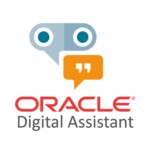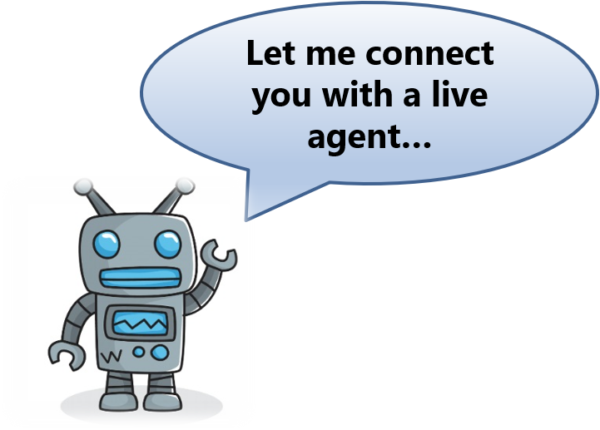 Oracle Digital Assistant (ODA) is a robust and versatile chatbot platform that can be utilized for a variety of use cases. One such use case is to provide relief to a costly and overworked live agent support staff.
Oracle Digital Assistant (ODA) is a robust and versatile chatbot platform that can be utilized for a variety of use cases. One such use case is to provide relief to a costly and overworked live agent support staff.
So, how do we accomplish this? No chatbot solution on the market can fully replace the knowledge and understanding of a human agent, but they can provide support for a variety of topics. At Fishbowl, we try to identify the high-volume questions or repetitive tasks being asked of live agents that we could easily replace or augment with a chatbot. This can mean an integration with a backend system to bring back the status of a customer’s order, or even something as simple as answering frequently asked questions (FAQs), such as providing information on a company’s return policy. But what about the rest of the customer’s questions? If a user asks a question that is outside of the scope of the chatbot, an answer of “I don’t know how to answer that” isn’t good enough. This is when the chatbot can transfer the user over to an existing live agent chat system.
Oracle Service Cloud Integration
Since Digital Assistant is an Oracle product, the live chat solution that works out of the box with the least amount of customization is Oracle Service Cloud. Inside of the chatbot, we can easily define which fields we would want to pass through to Service Cloud. This can be the customer’s information, such as email or phone number that they have entered in their chatbot conversation, or additional information, such as chat topic or chat queue ID that can help the agent provide better support to the customer. Additionally, the transcript of the conversation between the customer and the chatbot is passed through to the live agent so the customer doesn’t have to answer the same questions twice.
Zendesk and ServiceNow Integrations
It is also possible to integrate other live agent systems with Oracle Digital Assistant. Some other systems that Fishbowl has integrated live chat with are Zendesk and ServiceNow. These live chats take place inside of the existing chat widgets provided by the respective systems. When it is time for the conversation to switch to a live agent, our customization invites another agent into the conversation, allowing them to take over for the chatbot. Creating integrations with other live agent systems is as simple as connecting with a Digital Assistant webhook channel and handling the transfer using the APIs and SDKs specific to the system.
24 x 7 x 365 Customer Support
What if we want our chatbot to be on 24 hours a day, but our call center isn’t open all day long? For many of our customers, this is the case, and part of the reason why a chatbot is such a benefit. To handle for this case, we can determine whether we have agents online using the chatbot’s NodeJS backend. If we are outside of hours, we can create a support ticket using the ticketing system of your choice (Service Cloud, Zendesk, etc.) so that no customer is ignored.
Industry stats suggest that a chatbot should be able to deflect and handle 30% to 80% of live chat interactions. In our experiences, across multiple implementations and use cases, that number is much closer to 30%. Now, we do expect this number to increase over time as the Oracle Digital Assistant platform, for example, includes artificial intelligence, natural language processing, and machine learning. Collectively, all that technology should help a chatbot built with ODA get smarter over time. Nonetheless, providing a handoff to a live (human) agent will be necessary at some point during the conversation. The key when this happens is making that handoff seamless and providing the agent with as much context as possible. ODA is able to do that with Oracle Service Cloud, Zendesk, and ServiceNow.

